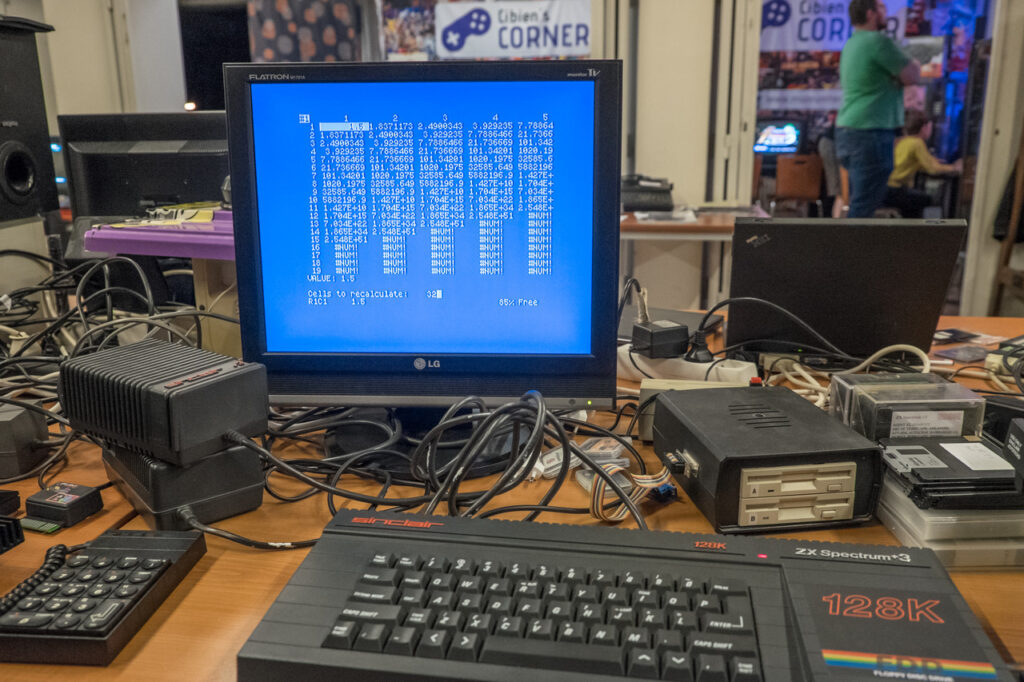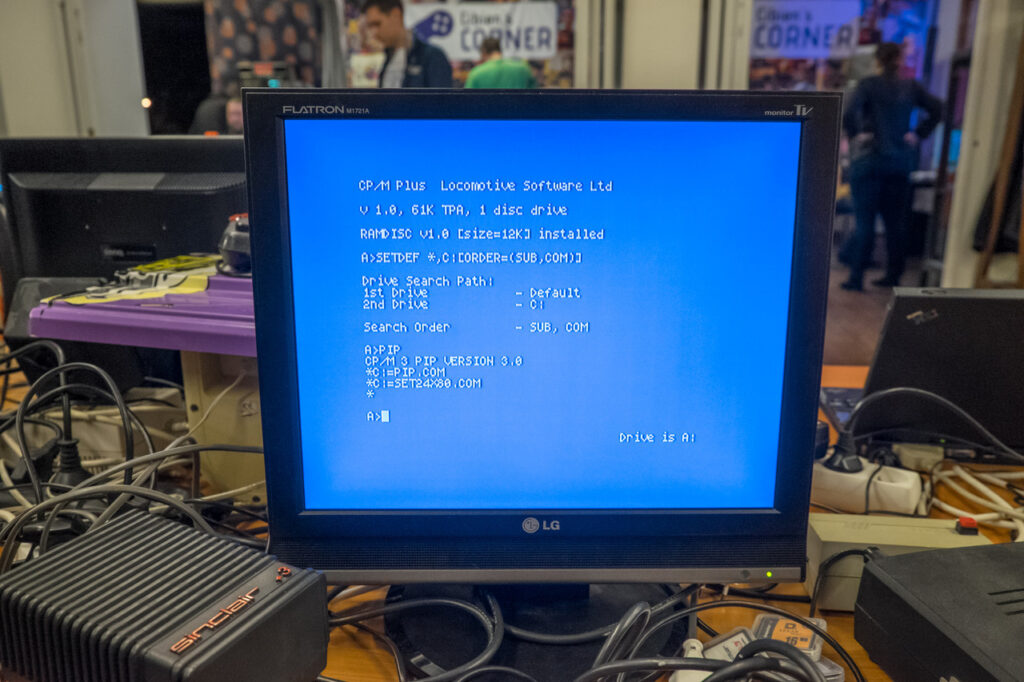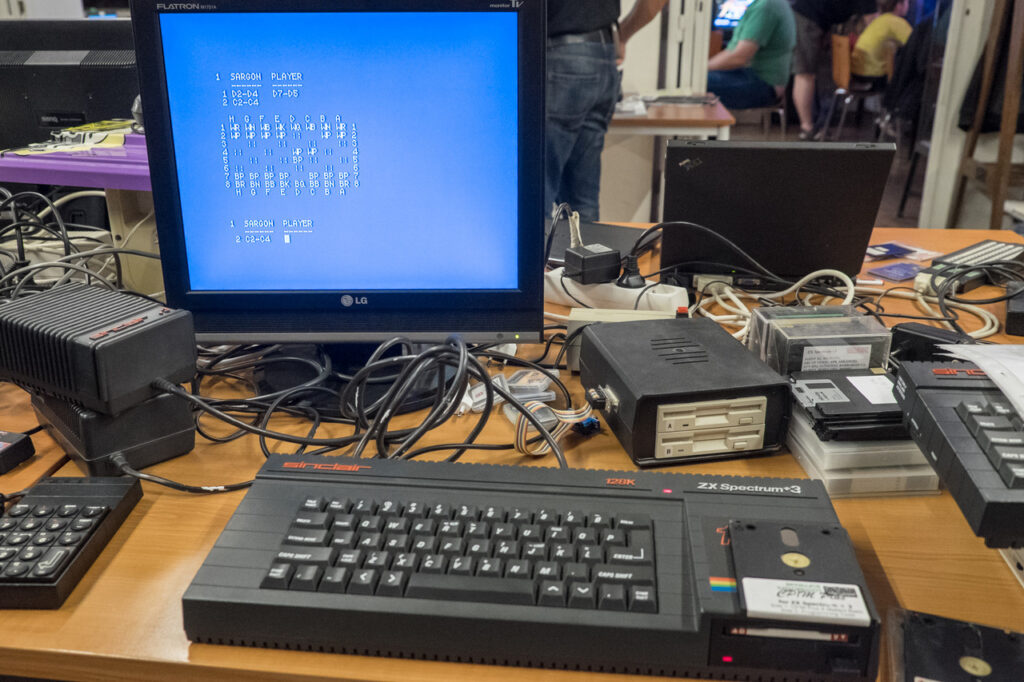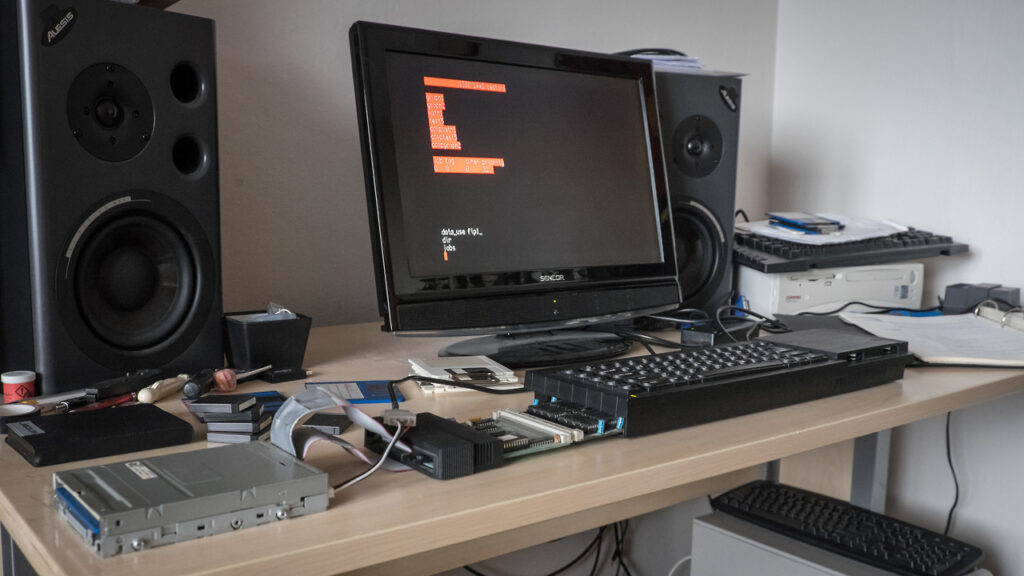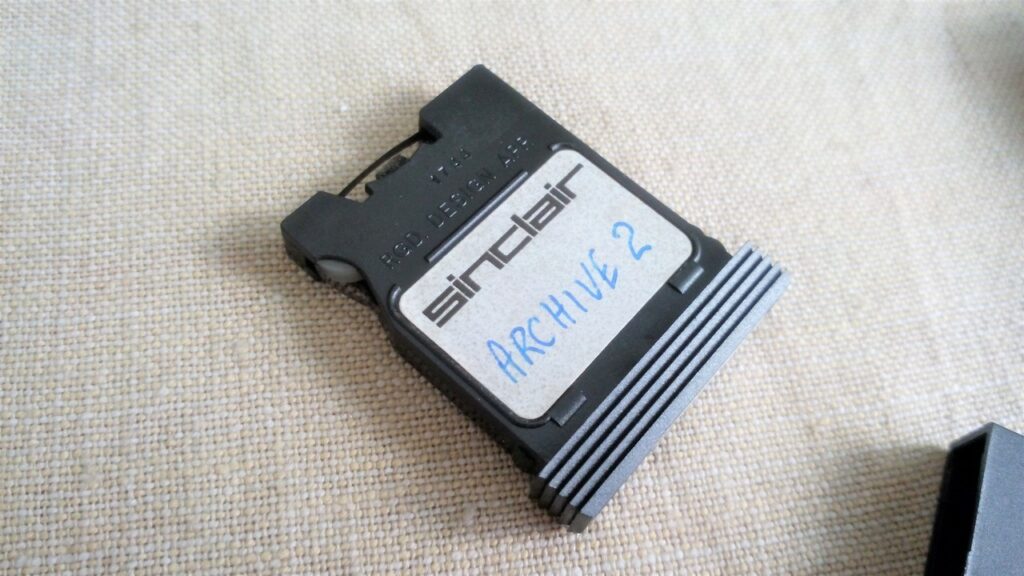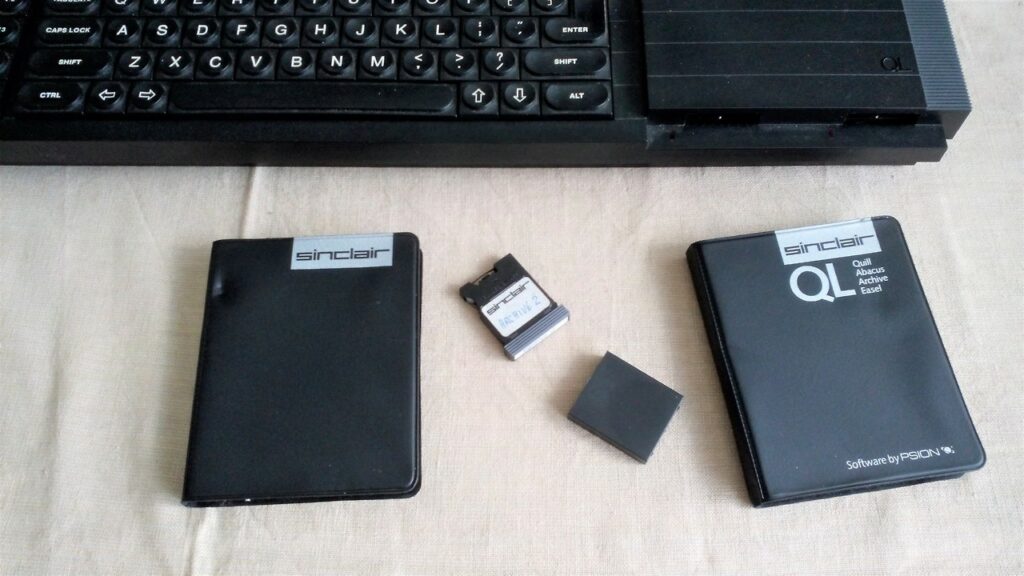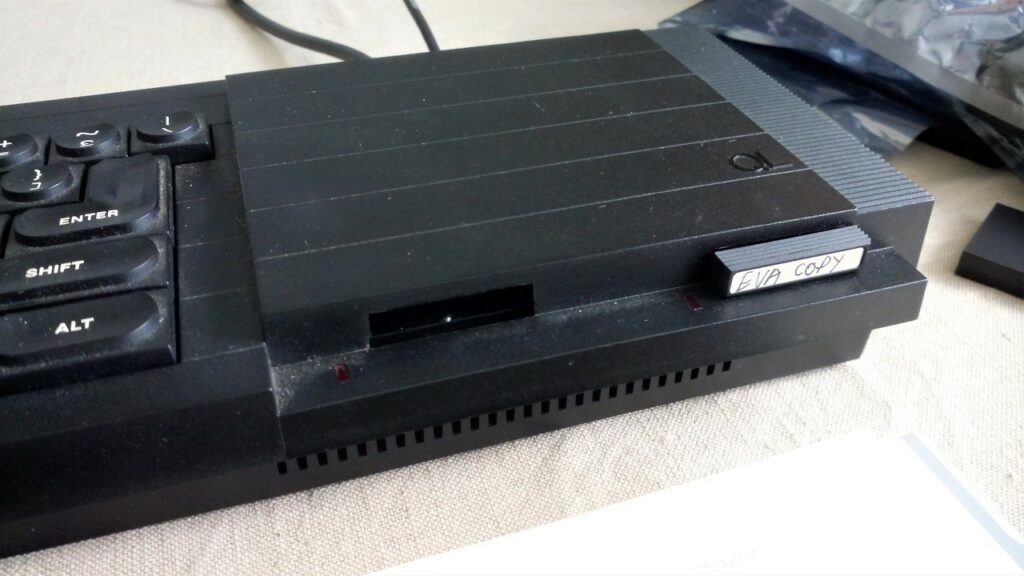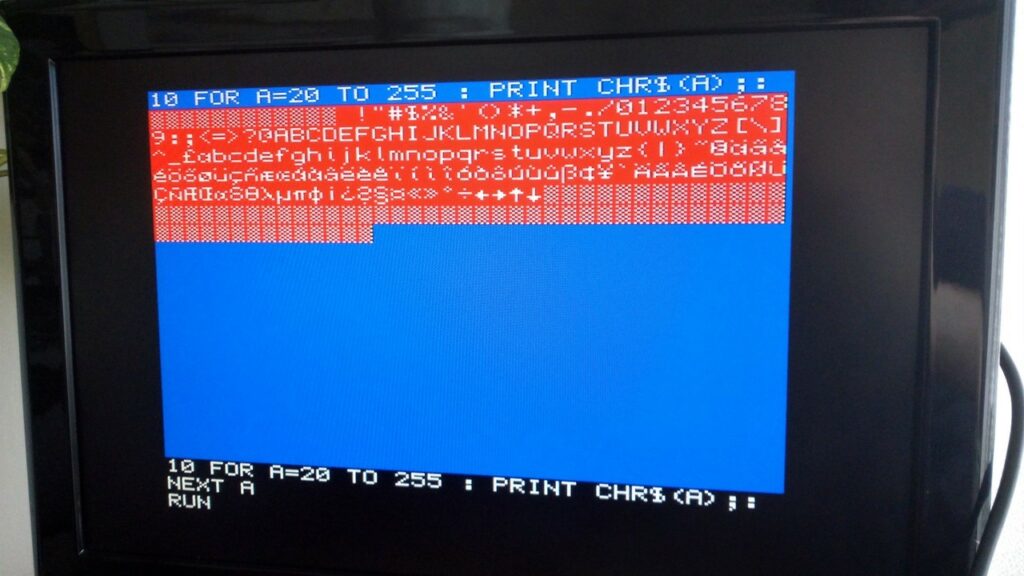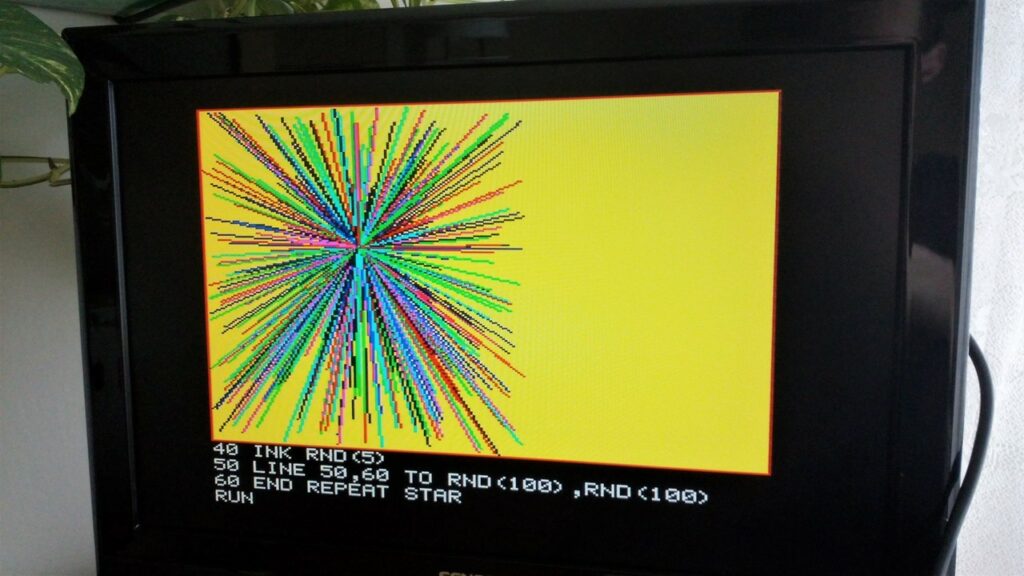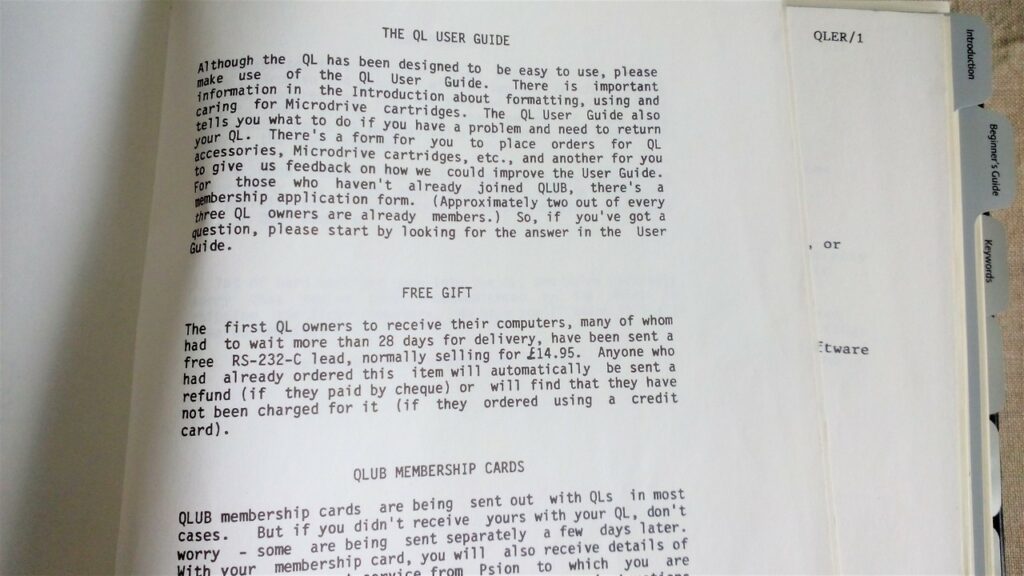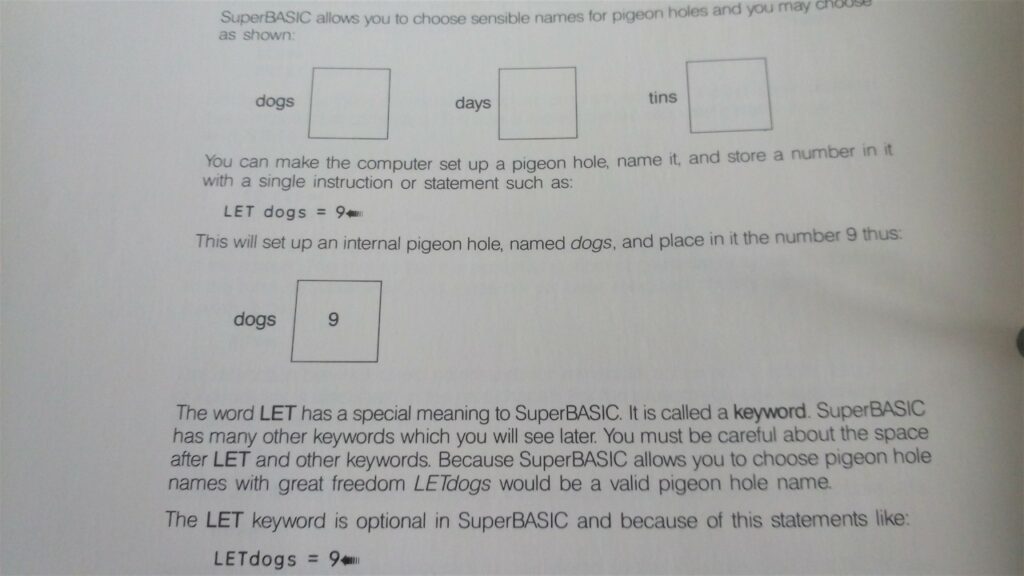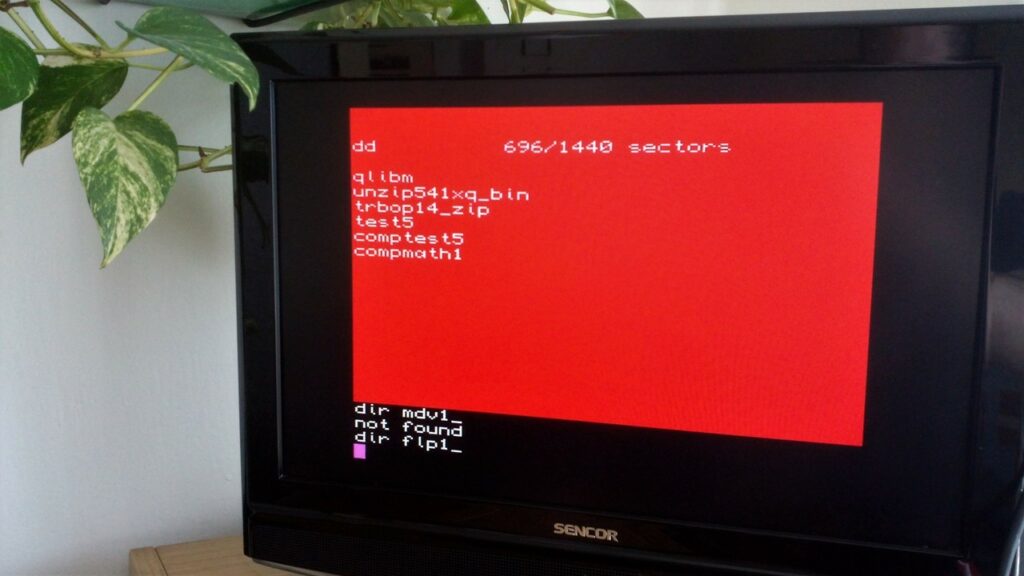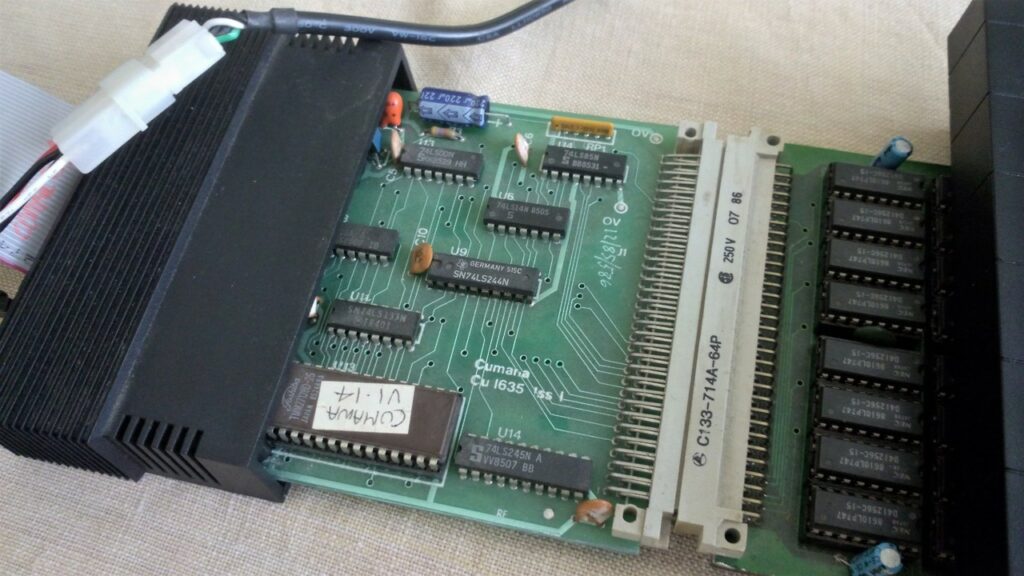CP/M running on Sinclair ZX Spectrum +3
Unlike previous ZX Spectrum computers, +3 is equipped with an internal 3-inch floppy drive (compatible with Amstrad computers) and it is fully capable of running CP/M. The system runs snappier and more responsive than Commodore 128 in the CP/M mode but there are two caveats. Multiple keys are missing in the crippled keyboard layout and these are replaced with cumbersome keyboard shortcuts. This can be especially annoying when working with spreadsheets.
Another issue comes from the fact that the video circuit works in a resolution of 256×192 so it cannot handle the standard 80×24 text-mode typical for CP/M machines. The computer normally displays only 32 characters per row which would not be enough for any CP/M program. The +3 version of CP/M therefore uses a reduced font resolution with just 5×8 pixels for each character (including space between characters). Such font allows to display 51×24 characters and that’s the default text mode when +3 is booted in CP/M.
Of course not all programs work correctly with the reduced screen size so there is a program called SET24x80.COM. It provides a virtual 80×24 screen and you can quickly switch between displaying the first 51 columns or last 51 columns of the screen using a keystroke.
